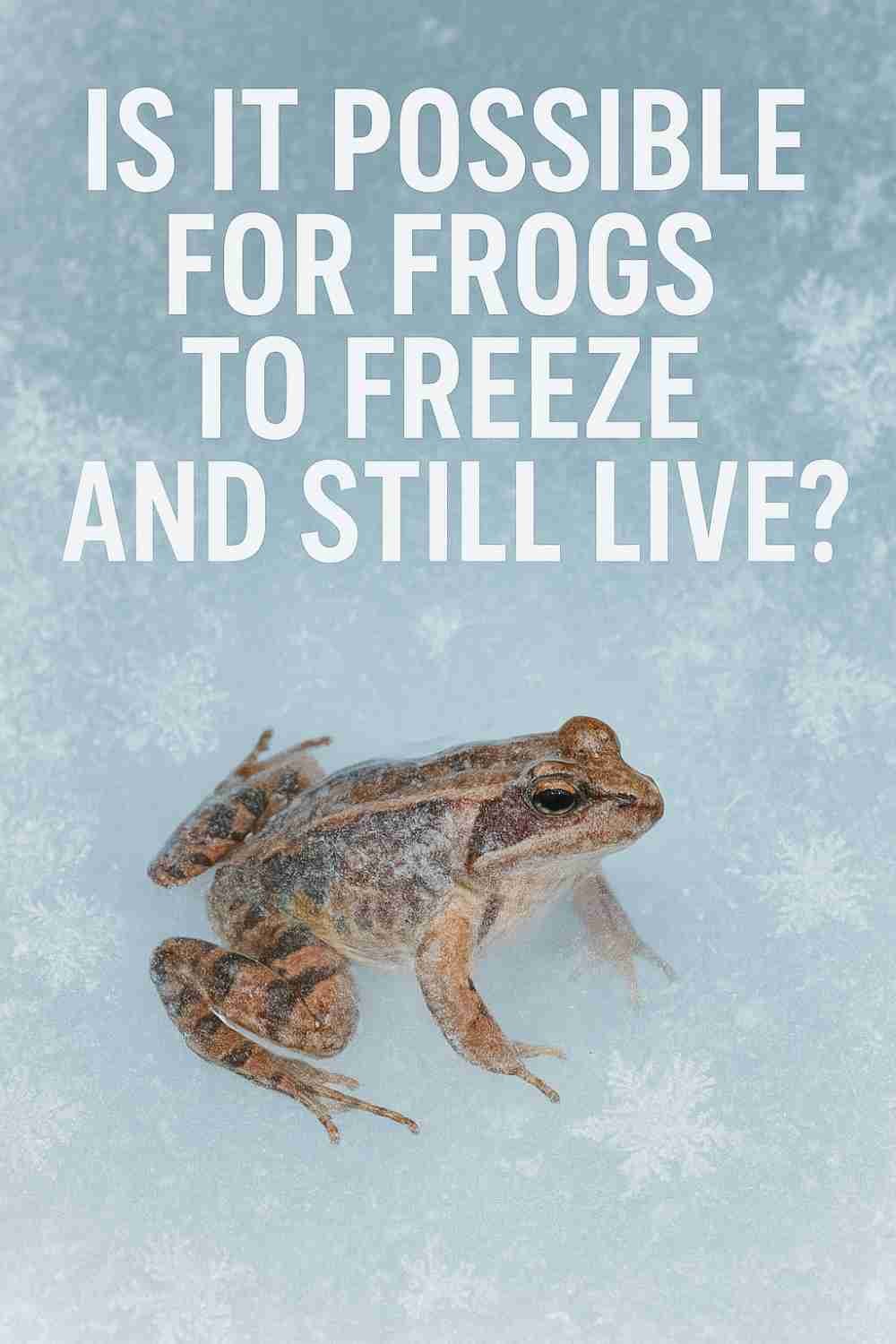 Imagine stepping outside on a frigid winter morning, your breath fogging the air, and spotting what looks like a tiny frog-shaped ice cube nestled in the frost. Your first thought? “No way that thing’s still alive.” But here’s the kicker—it might be. Some frogs don’t just survive freezing; they practically reinvent the rules of life and death every winter.
Imagine stepping outside on a frigid winter morning, your breath fogging the air, and spotting what looks like a tiny frog-shaped ice cube nestled in the frost. Your first thought? “No way that thing’s still alive.” But here’s the kicker—it might be. Some frogs don’t just survive freezing; they practically reinvent the rules of life and death every winter.
The Ice Frog Paradox
Let’s get one thing straight: freezing is usually a death sentence for most animals. Ice crystals form inside cells, shredding them like tiny glass shards. Organs fail. Tissues rupture. Game over. But for certain frogs, like the wood frog (Rana sylvatica), freezing isn’t the end—it’s just a really weird intermission. These little Houdinis pull off a biological magic trick so wild it makes cryogenic science look like child’s play.
How? It starts with a cocktail of natural antifreeze. When temperatures drop, wood frogs flood their bloodstream with glucose—so much so that their blood sugar levels would put a diabetic coma to shame. This sugary surge does two things: it lowers the freezing point of their cells and acts like molecular bubble wrap, cushioning delicate tissues from ice damage. Meanwhile, their livers work overtime, converting glycogen into even more glucose. It’s like their bodies are frantically chugging maple syrup before a blizzard hits.
The Art of Playing Dead (Literally)
Here’s where things get surreal. As ice spreads through their bodies, wood frogs stop breathing. Their hearts stop beating. No blood flow. No brain activity. By all clinical definitions, they’re dead. But then spring rolls around, temperatures rise, and—poof—they thaw back to life like nothing happened. No defibrillator needed. No dramatic gasps for air. Just a groggy stretch and a hop back into the underbrush.
Scientists call this cryobiosis, a state of suspended animation where metabolism grinds to a halt. It’s not hibernation—hibernating animals still have detectable metabolic activity. This is more like flipping the “off” switch entirely. The frog’s cells dehydrate, shrinking away from forming ice, while the glucose keeps vital structures intact. Think of it as nature’s version of unplugging a computer to avoid a power surge.
Why Don’t All Frogs Do This?
Good question. Not all frogs have this superpower. Tropical frogs? Forget it. They’d turn into frog-sicles permanently. Even among cold-climate species, wood frogs are outliers. Their secret lies in evolutionary adaptation—generations of frogs that didn’t master the freeze-thaw cycle didn’t survive to pass on their genes. It’s survival of the most frost-resistant.
But here’s the catch: timing is everything. Thaw too early during a winter warm spell? The frog burns through its glucose reserves and starves. Thaw too late? Predators might beat the clock. It’s a high-stakes gamble, and these frogs are all in.
Human Applications: Sci-Fi or Future Reality?
You might be wondering: if frogs can do this, why can’t we? Cryonics—the practice of freezing humans for potential future revival—has been a pipe dream for decades. But frog biology offers clues. Their glucose trick could inspire better preservation techniques for organ transplants. Some researchers are even studying frog proteins to improve cryopreservation of human cells.
That said, don’t start drafting your will with instructions to freeze yourself just yet. Frogs are tiny, with simple circulatory systems. Scaling this up for a human? We’re talking light-years of scientific hurdles. Still, it’s a tantalizing glimpse into what might be possible.
The Dark Side of Freezing
Before you start romanticizing frozen frogs, let’s talk downsides. Even for wood frogs, freezing is a last resort. It’s stressful. It burns energy. And if temperatures yo-yo unpredictably—thanks, climate change—they might freeze and thaw multiple times in a season, exhausting their survival reserves. Some don’t make it.
Then there’s the thawing process. Imagine waking up after months on ice, your muscles stiff, your body screaming for oxygen. Frogs don’t just bounce back instantly. They spend hours—sometimes days—slowly reviving, their hearts sputtering back to life like a rusty engine. It’s a miracle, sure, but not a gentle one.
Final Thoughts: Life Finds a Way
The next time you see a frog in winter, give it some respect. These unassuming amphibians are rewriting the textbook on life’s limits. They’re proof that nature, when pushed, will find a way to endure—even if that means turning into a popsicle for months on end.
So, can frogs freeze and still live? Absolutely. But more importantly, they remind us that survival isn’t always about brute strength or speed. Sometimes, it’s about embracing the freeze—and trusting you’ll thaw out stronger on the other side. 🐸❄️

